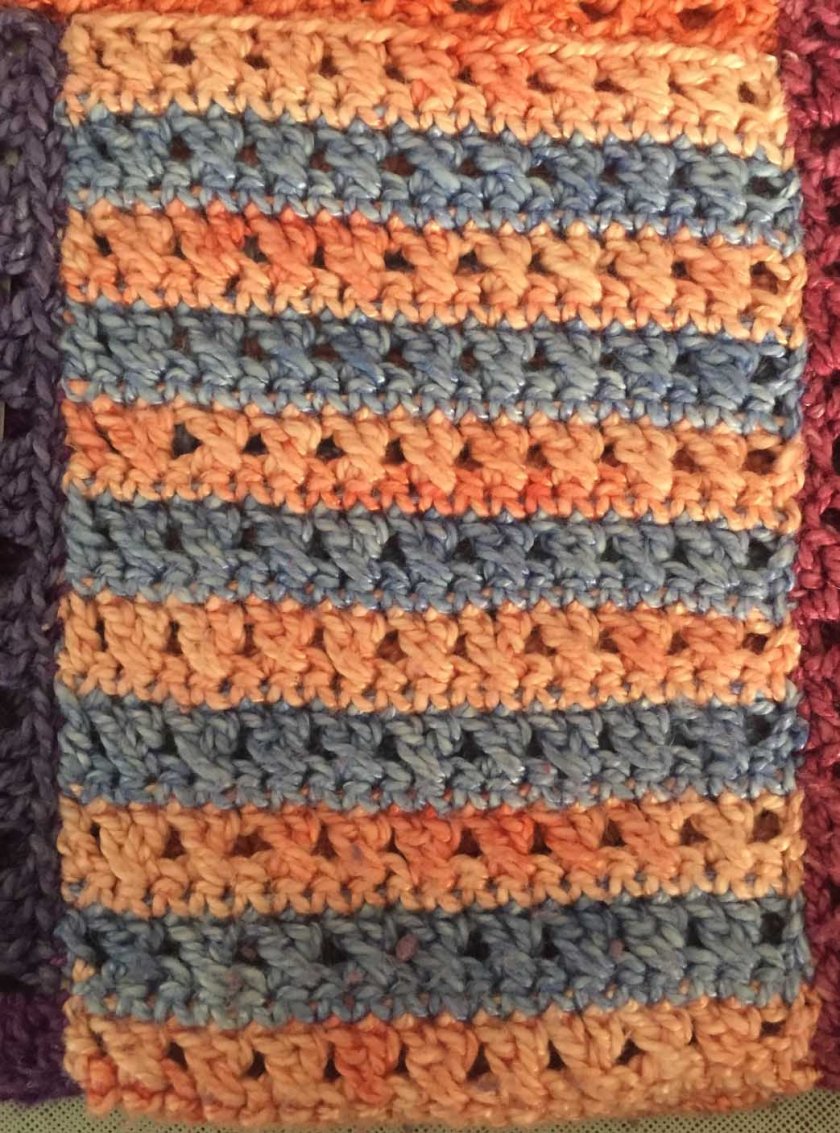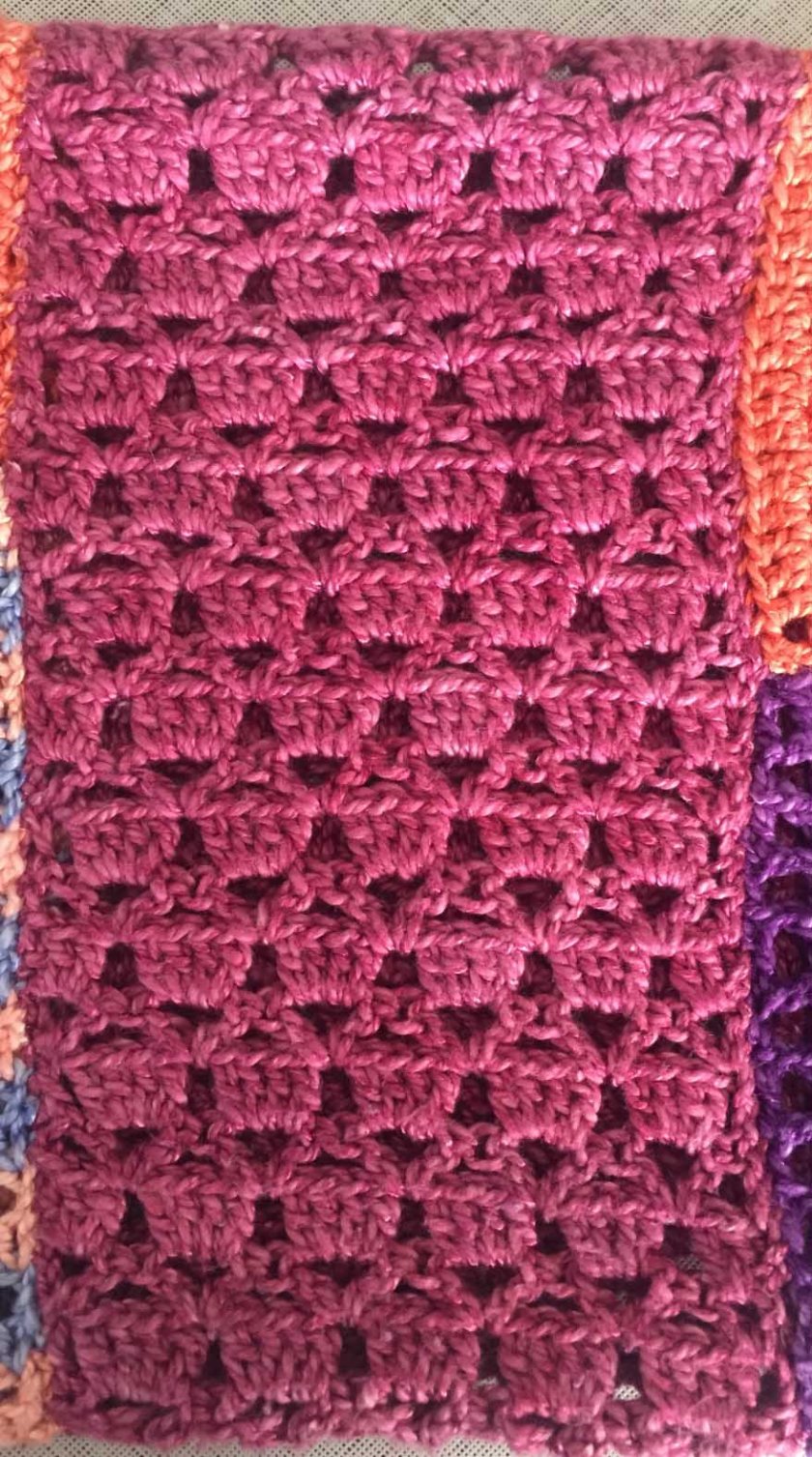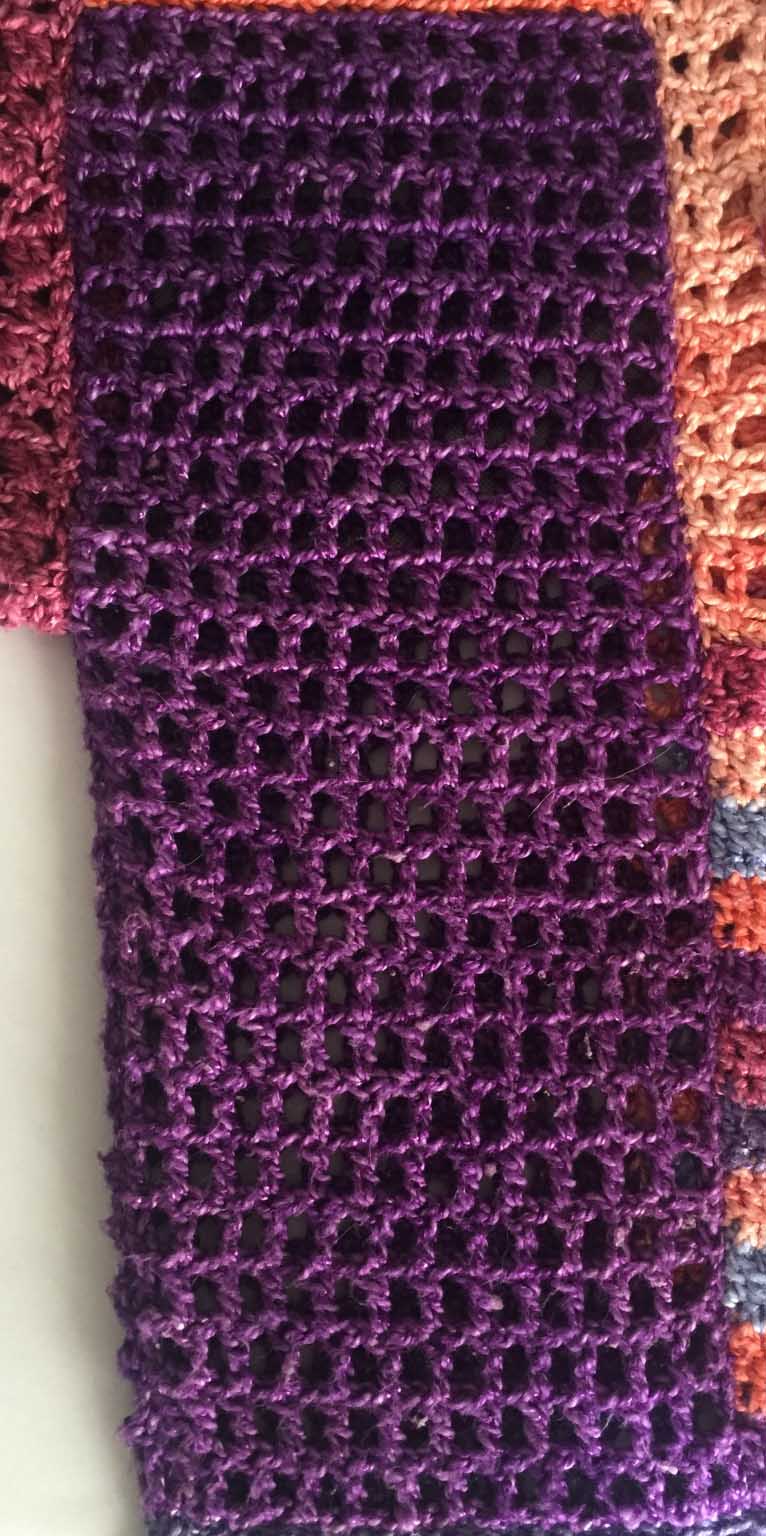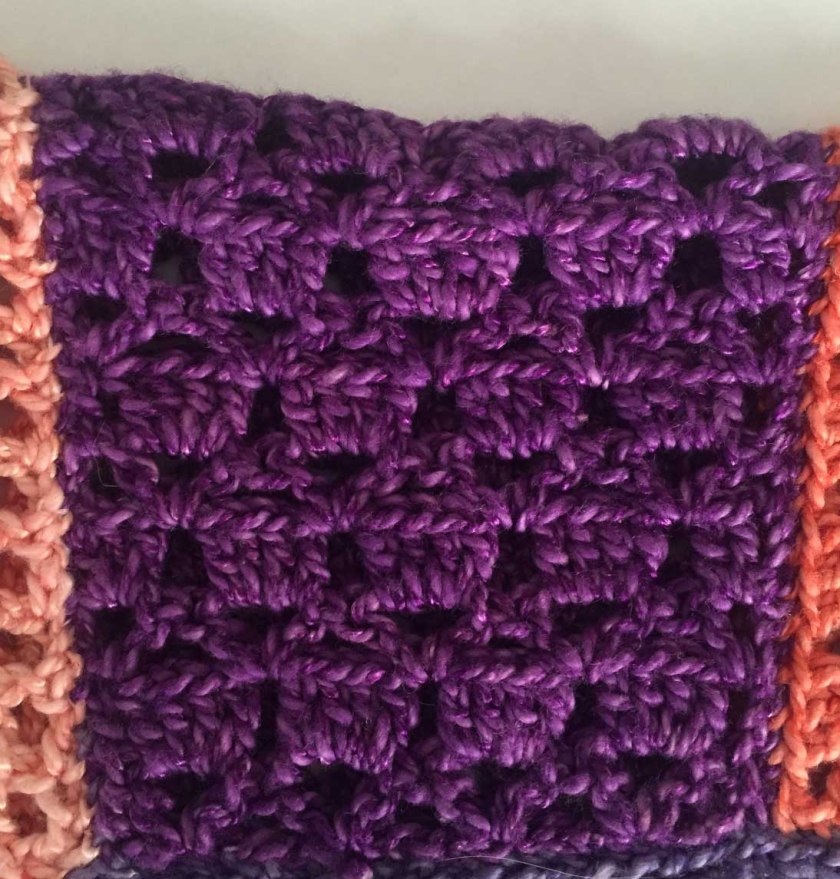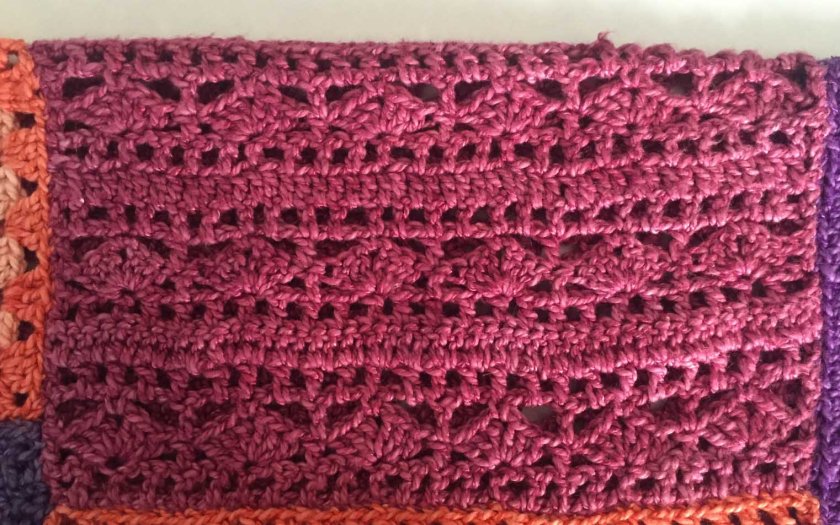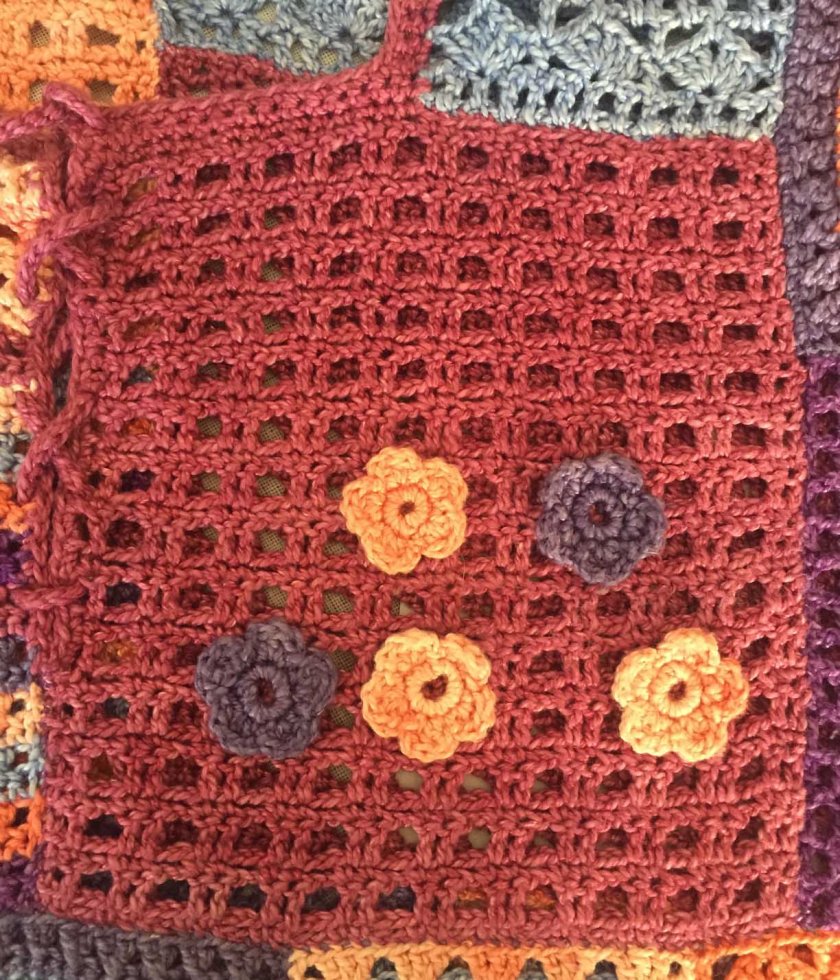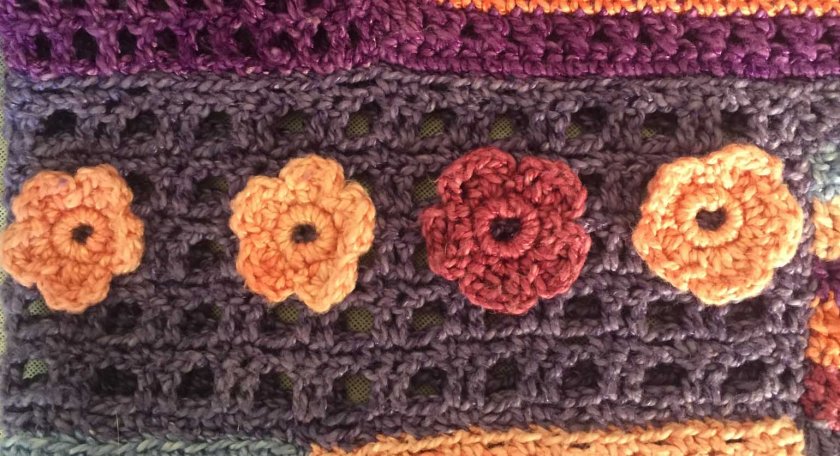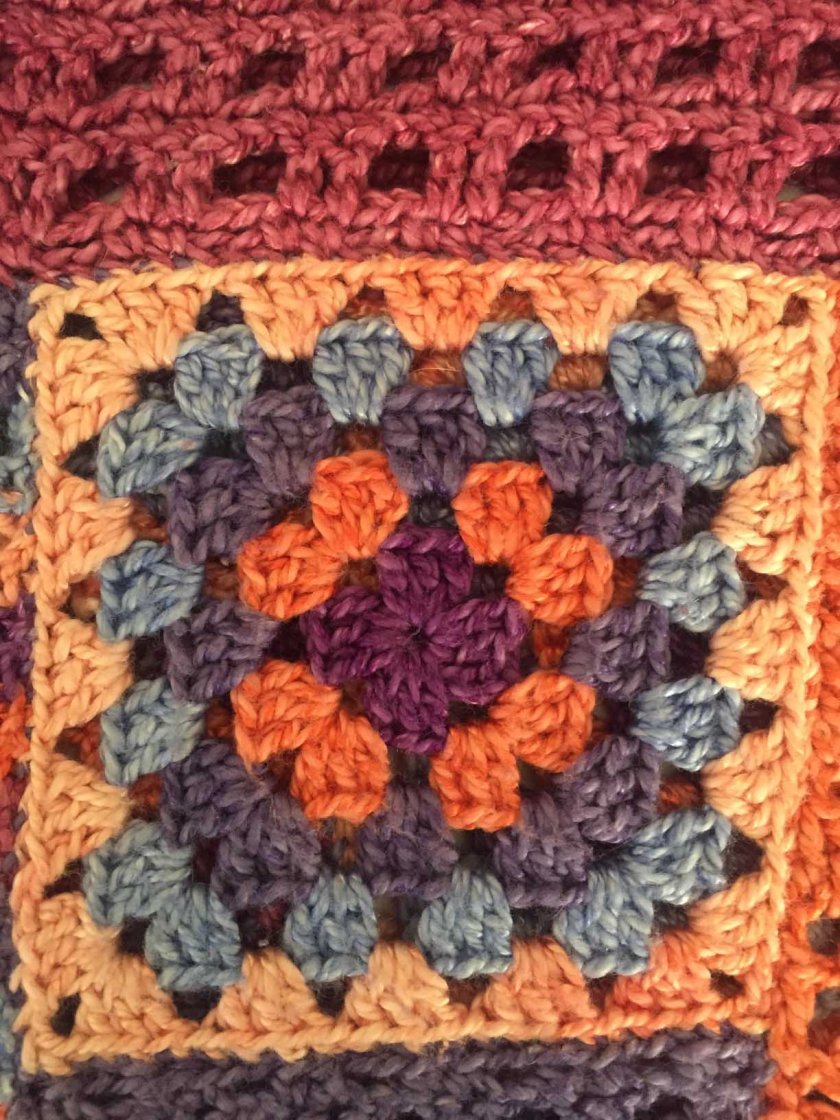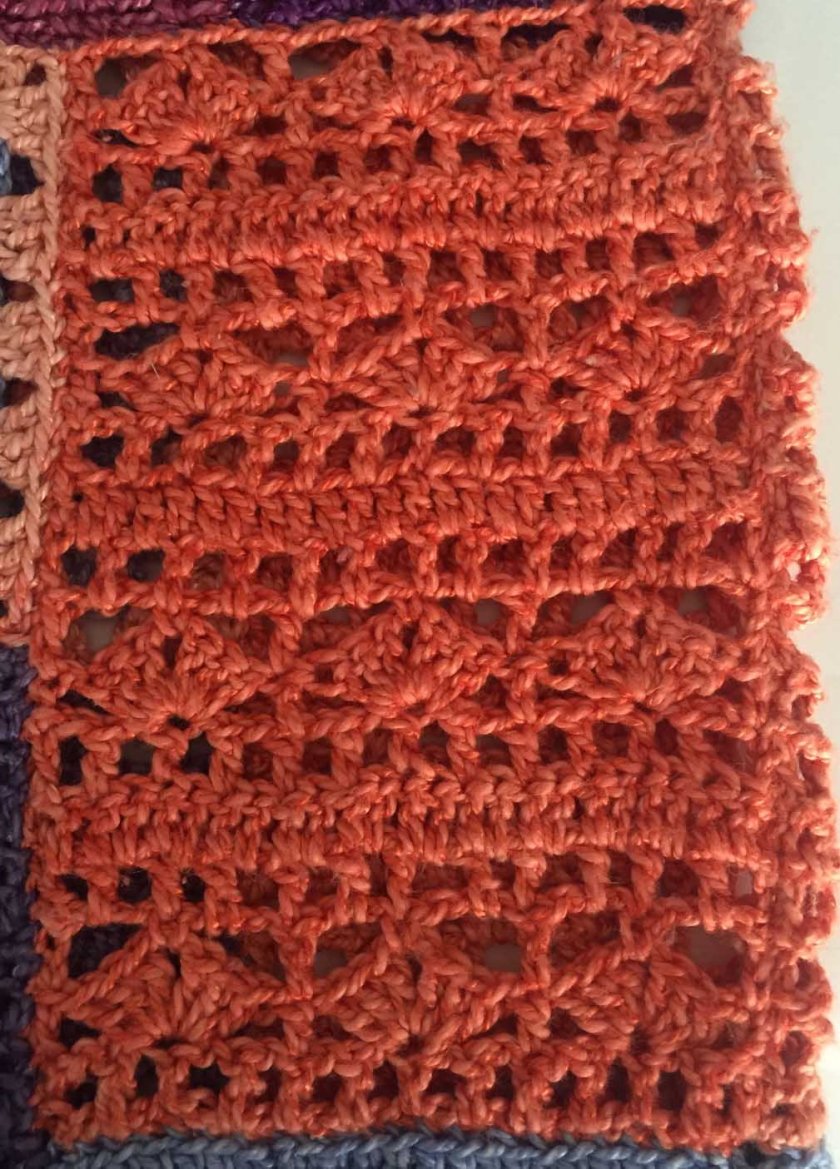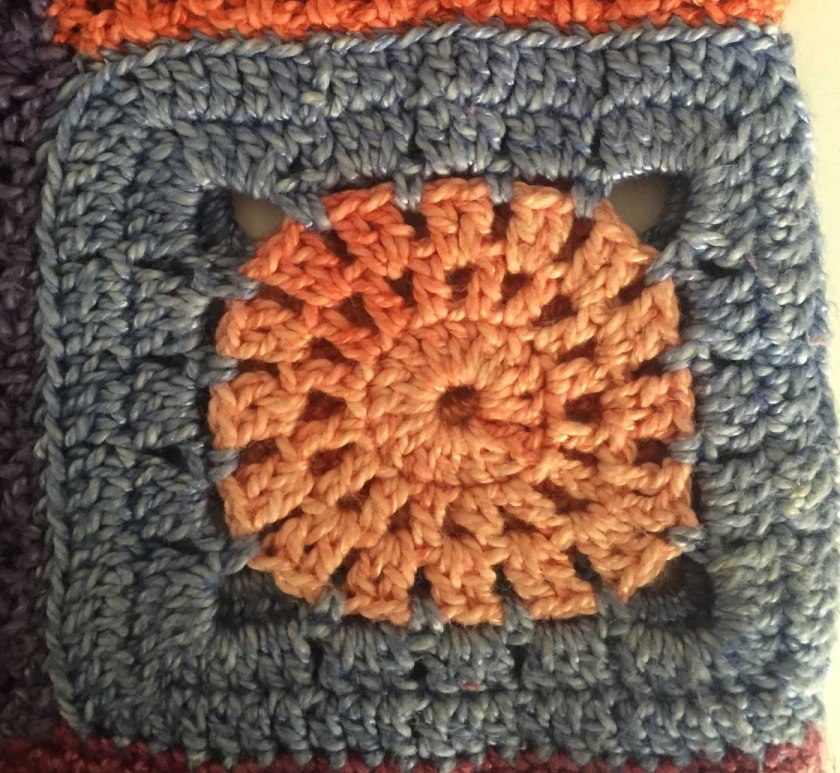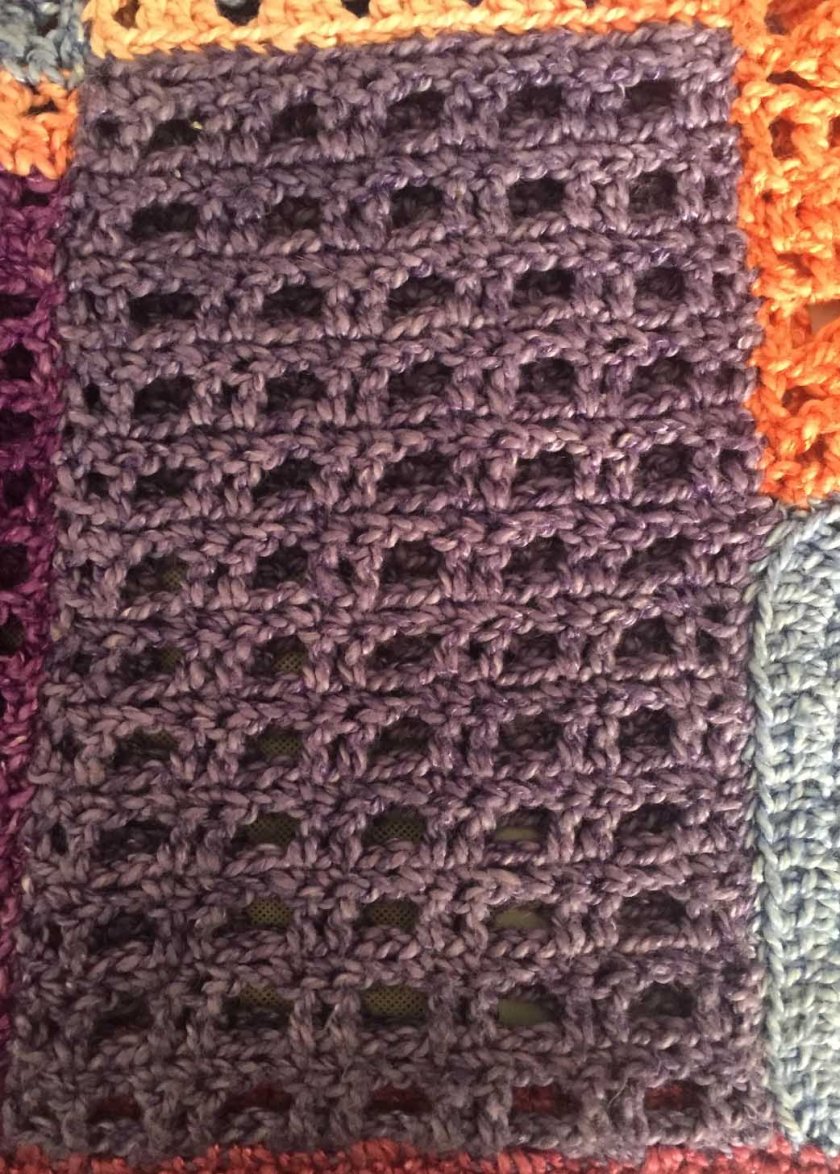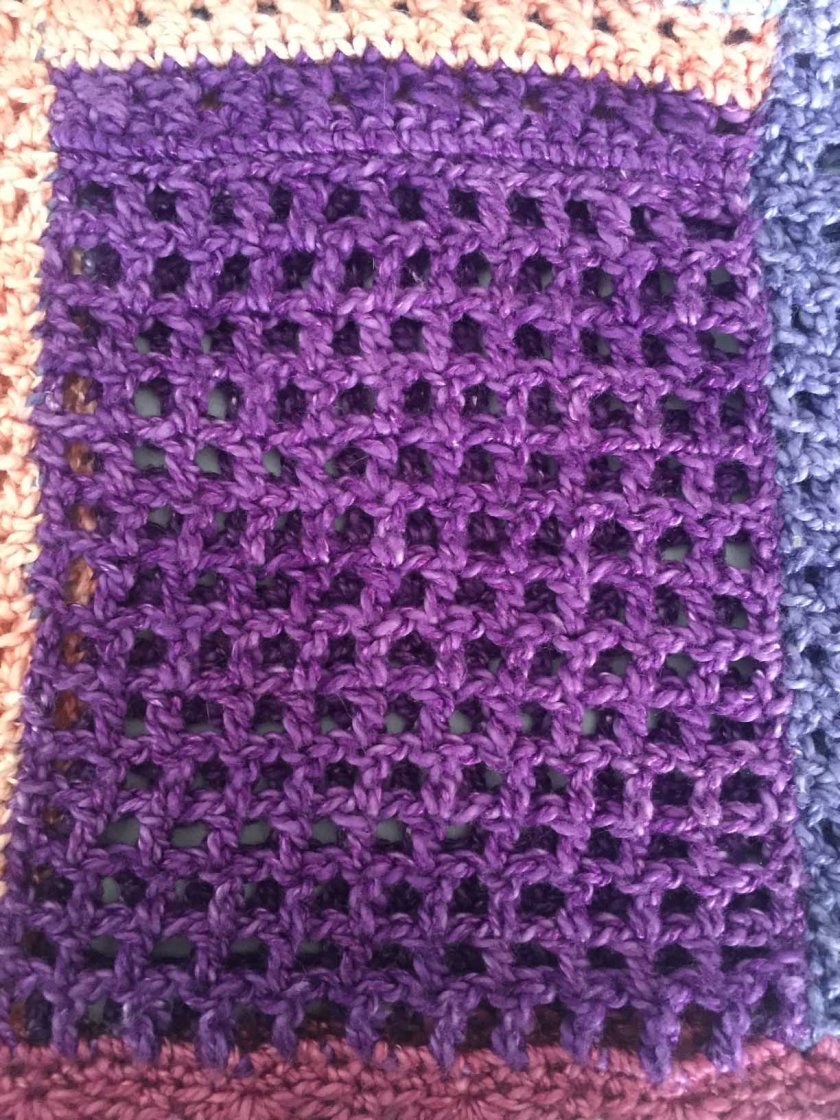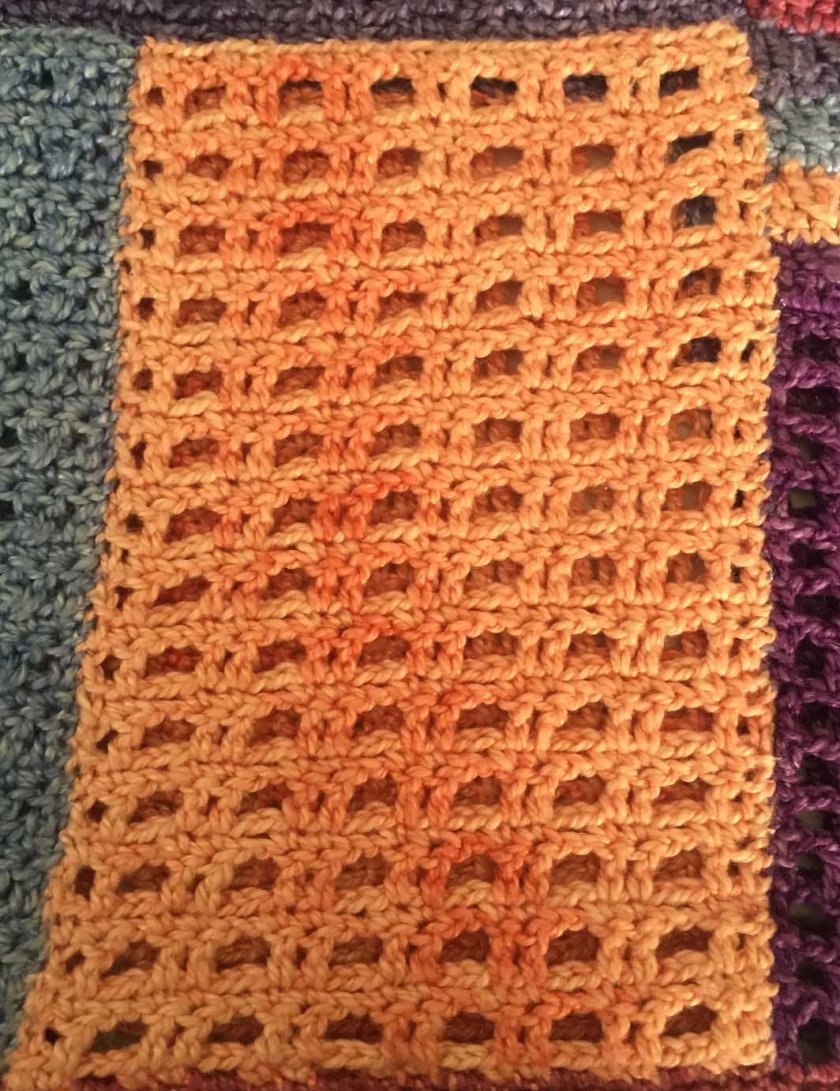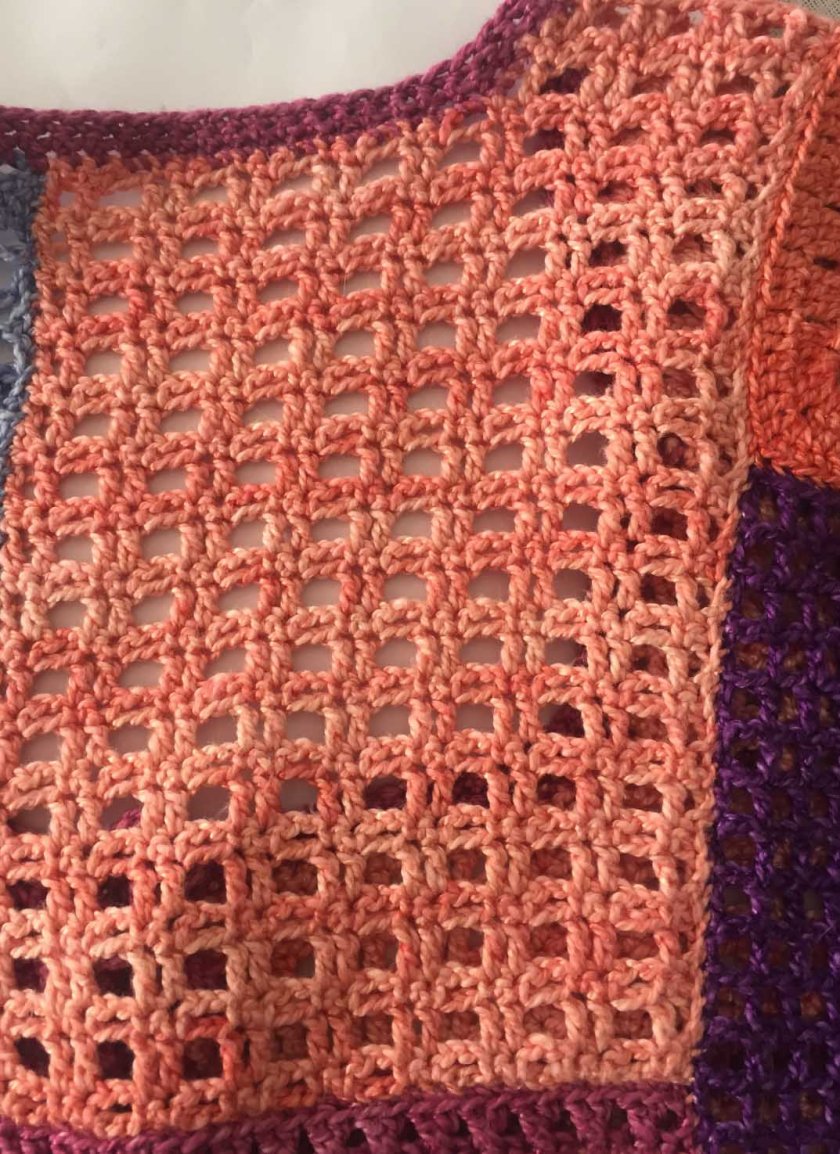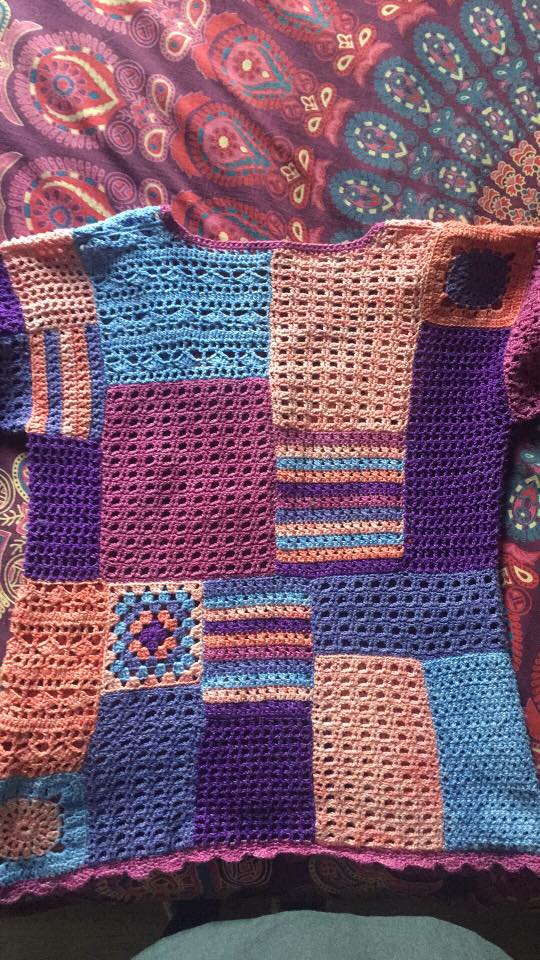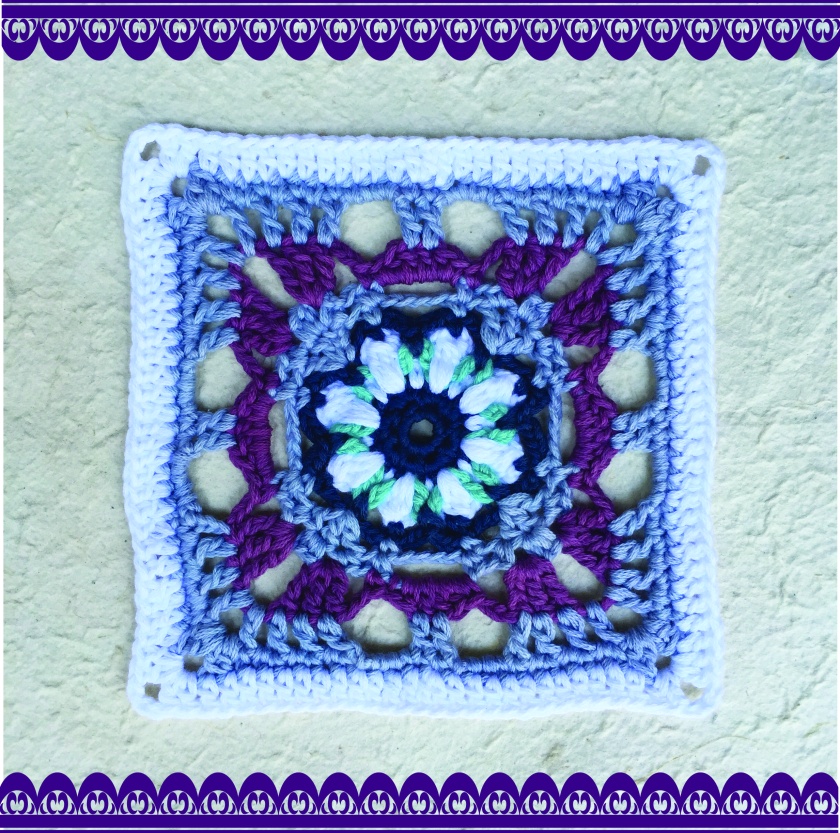This my special thank you free pattern for all the support the past year. It was a tough year for me and I really want to thank each and everyone who supported me and motivated me when I needed strength to carry on. I am going to take a break for the rest of December and will see you in the New Year. May you have a blessed festive season!
What you will need:
Vinnis Colours Nikkim in Natural and 3 mm crochet hook
Sugar:water (50:50) solution, starch or a solution of wood glue and a little bit of water
Abbreviations (American terminology):
beg – begin, ch – chain stitch, dc – double crochet stitch, cl – cluster, gp – group, hdc – half double crochet stitch, rep – repeat, rnd – round, sc – single crochet stitch, sp – space, ss – slip stitch, st(s) – stitch(es), tog – together, tr – treble stitch
Size: 42 cm in length
Pattern:
With Natural, crochet 8 ch, ss into the 1st ch to form a ring.
Rnd 1: 1 ch, 16 sc in ring, ss in the 1st sc.

Rnd 2: 3 ch, 1 dc in the next sc, 2 ch, *1 dc in the next 2 sc, 2 ch; rep from * to end, ss in top of beg-3 ch.

Rnd 3: 3 ch, 1 dc in the next dc, 5 ch, *1 dc in the next 2 dc, 5 ch; rep from * to end, ss in top of beg-3 ch.

Rnd 4: 3 ch, 1 dc in the next dc, 3 ch, 3 dc-cl in the same st, 1 ch, 3 dc-cl in the next dc, 3 ch, *1 dc in the same st and in the next dc, 3 ch, 3 dc-cl in the same st, 1 ch, 3 dc-cl in the next dc, 3 ch; rep from * to end, ss in top of beg-3 ch.

Rnd 5: 3 ch, 1 dc in the next dc, 3 ch, 3 dc-cl in the same st, 1 ch, 1 dc in the next 1 ch-sp, 1 ch, 3 dc-cl in the next dc, 3 ch, *1 dc in the same st and in the next dc, 3 ch, 3 dc-cl in the same st, 1 ch, 1 dc in the next 1 ch-sp, 1 ch, 3 dc-cl in the next dc, 3 ch; rep from * to end, ss in top of beg-3 ch.

Rnd 6: 3 ch, 1 dc in the next dc, 3 ch, (1 tr, 2 ch, 1 tr) in the next dc, 3 ch, *1 dc in the next 2 dc, 3 ch, (1 tr, 2 ch, 1 tr) in the next dc, 3 ch; rep from * to end, ss in top of beg-3 ch.
Rnd 7: 1 ch, 1 sc in the same st, 1 sc in the next dc, 3 sc in the next 3 ch-sp, 1 sc in the next tr, 2 sc in the next 2 ch-sp, 1 sc in the next tr, 3 sc in the next 3 ch-sp, *1 sc in the next 2 dc, 3 sc in the next 3 ch-sp, 1 sc in the next tr, 2 sc in the next 2 ch-sp, 1 sc in the next tr, 3 sc in the next 3 ch-sp; rep from * to end, ss in the beg-sc.

From here the wing point is formed:
Row 1: 1 ch, 1 sc in the same st, 1 hdc in the next sc, 1 dc in the next sc, (3 ch, skip 2 sc, 1 sc in the next sc) 10 times, 3 ch, skip 2 sc, 1 dc in the next sc, 1 hdc, in the next sc, 1 sc in the next sc, turn.
Row 2: ss in next 3 sts and into 3 ch-sp, 1 sc in the same sp, *4 ch, 1 sc in the next 3 ch-sp; rep from * to end = 10 ch-sps, turn.

Row 3: ss into 4 ch-sp, 1 sc in the same sp, *5 ch, 1 sc in the next 4 ch-sp; rep from * to end = 9 ch-sps, turn.
Row 4: ss into 5 ch-sp, 1 sc in the same sp, *6 ch, 1 sc in the next 5 ch-sp; rep from * to end = 8 ch-sps, turn.
Row 5: ss into 6 ch-sp, 1 sc in the same sp, *6 ch, 1 sc in the next 6 ch-sp; rep from * to end = 7 ch-sps, turn.
Row 6: ss into 6 ch-sp, 1 sc in the same sp, *6 ch, 1 sc in the next 6 ch-sp; rep from * to end = 6 ch-sps, turn.
Row 7: ss into 6 ch-sp, 1 sc in the same sp, *6 ch, 1 sc in the next 6 ch-sp; rep from * to end = 5 ch-sps, turn.
Row 8: 6 ch, 1 sc in the 1st ch-sp, *6 ch, 1 sc in the next 6 ch-sp; rep from * to end, 3 ch, 1 dc in the last sc = 6 ch-sps, turn.
Row 9: ss into 3 ch-sp, 1 sc in the same sp, *6 ch, 1 sc in the next 6 ch-sp; rep from * to end = 5 ch-sps, turn.
Row 10: rep row 8.
Row 11: rep row 9.
Row 12: ss into 6 ch-sp, 1 sc in the same sp, *6 ch, 1 sc in the next 6 ch-sp; rep from * to end = 4 ch-sps, turn.
Row 13: 5 ch, 1 sc in the 1st ch-sp, *5 ch, 1 sc in the next 6 ch-sp; rep from * to end, 2 ch, 1 dc in the last sc = 5 ch-sps, turn.
Row 14: rep row 12.
Row 15: rep row 13.
Row 16: rep row 12.
Row 17: 3 ch, (4 dc in next 5 ch-sp) 4 times, 1 dc in last st, turn.
Row 18: 3 ch, 1 dc in next dc, (2 dc tog over next 2 dc, 1 dc in next 2 dc) 4 times, turn.
Row 19: 4 ch, (skip 1 dc, 1 dc in the next dc, 1 ch) 5 times, 1 dc in the next dc, turn (leave last dc) = 7 dc.
Row 20: 3 ch, (1 dc in the 1 ch-sp, 1 dc in the next dc) 6 times, turn = 13 dc.
Row 21: 3 ch, 2 dc tog over next 2 dc, (1 dc in the next dc, 2 dc tog over next 2 dc) 3 times, 1 dc in last st, turn.
Row 22: 3 ch, 1 dc in every st, turn = 9 dc.
Row 23: 4 ch, (skip 1 dc, 1 dc in the next dc, 1 ch) 3 times, 1 dc in the next dc, turn.
Row 24: 3 ch, (1 dc in the 1 ch-sp, 1 dc in the next dc) 4 times, turn = 9 dc.
Row 25: 3 ch, 1 dc in the next dc, 2 dc tog over next 2 dc, 1 dc in the next dc, 2 dc tog over the next 2 dc, 1 dc in the last 2 dc, turn.
Row 26: 3 ch, 2 dc tog over the next 2 dc, 1 dc in the next dc, 2 dc tog over the next 2 dc, 1 dc in the last dc, turn.
Row 27: 3 ch, 3 dc tog over next 3 dc, 1 dc in last dc, turn.
Row 28: 3 dc, 2 dc tog over next 2 dc, turn.

With RS front, work 2 rounds sc around the wing, ending each rnd with ss.
Last rnd: 1 ch, 1 sc in the same st, *3 ch, skip 1 sc, 1 sc in the next sc; rep from * to end.






































